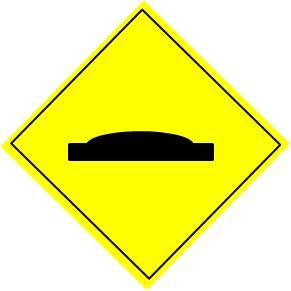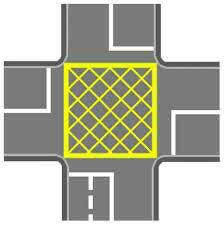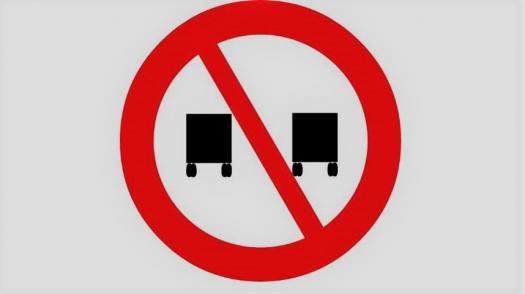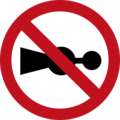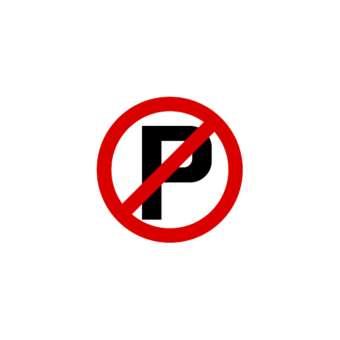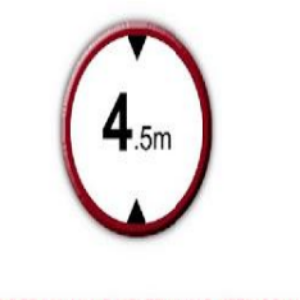Say 'no' To Road Accident 🚑

The 'Say 'NO' To Road Accident' quiz assesses knowledge on road safety rules and driving regulations, including understanding traffic signs and license conditions. It is designed to enhance awareness and compliance among new drivers, contributing to safer driving practices.
- 1.
What are the conditions imposed on this driving license holder? (apakah syarat yang dikenakan ke atas pemegang lesen memandu ini?)
- A.
Can carry passengers (boleh membawa penumpang)
- B.
Cannot carry passengers (tidak boleh membawa penumpang)
- C.
I'm not sure (saya tidak pasti)
Correct Answer
B. Cannot carry passengers (tidak boleh membawa penumpang)Explanation
This driving license holder is not allowed to carry passengers.Rate this question:
-
- 2.
How long will the trial driving license be given by the JPJ to the driver? (berapa lamakah lesen memandu percubaan diberikan oleh JPJ kepada pemandu?)
- A.
2 years (2 tahun)
- B.
1 year (1 tahun)
- C.
8 months (8 bulan)
Correct Answer
A. 2 years (2 tahun)Explanation
The trial driving license will be given by the JPJ to the driver for a duration of 2 years.Rate this question:
-
- 3.
What is the sign shown below? (apakah tanda yang ditunjukkan di bawah?)
- A.
Flat road (jalan rata)
- B.
Slippery road (jalan licin)
- C.
Danger bends (bahaya membengkok)
- D.
Unflatten road (jalan tidak rata)
Correct Answer
D. Unflatten road (jalan tidak rata)Explanation
The sign shown below indicates an unflatten road. This means that the road surface is not smooth and may have bumps, potholes, or uneven sections. Drivers should proceed with caution and adjust their speed accordingly to ensure safety while driving on this type of road.Rate this question:
-
- 4.
Which sign is the narrow road in front? ( manakah tanda yang menunjukkan jalan sempit di depan?)
- A.
Option 1
- B.
Option 2
- C.
Option 3
- D.
Option 4
Correct Answer
C. Option 3Explanation
Option 3 is the correct answer because it is implied that the question is asking for the sign that indicates a narrow road ahead. Since there is no other information given about the signs or the context, we can assume that Option 3 is the correct choice based on the question prompt.Rate this question:
-
- 5.
What needs to be done if it is encountered with a triple intersection facing? (apa yang perlu dilakukan jika bertembung dengan persimpangan tiga ?)
- A.
Give a signal before turning (memberi isyarat sebelum beralih)
- B.
Turn without seeing the vehicle behind (membelok tanpa melihat kenderaan di belakang)
- C.
Stop suddenly and turn (berhenti tiba-tiba dan belok)
Correct Answer
A. Give a signal before turning (memberi isyarat sebelum beralih)Explanation
When encountering a triple intersection, it is important to give a signal before turning. This is necessary to inform other drivers of your intention to change direction and helps to ensure a safe and smooth flow of traffic. By signaling before turning, you are allowing other drivers to anticipate your actions and adjust their own driving accordingly. This helps to prevent accidents and promotes overall road safety.Rate this question:
-
- 6.
What is this sign shown? (apakah tanda yang ditunjukkan?)
- A.
No entry (dilarang masuk)
- B.
Prohibited from turning around (dilarang membuat pusingan)
- C.
Hump in front (bonggol di hadapan)
Correct Answer
A. No entry (dilarang masuk)Explanation
The sign shown in the question is a "No entry" sign, which indicates that it is prohibited to enter the area or road ahead. This sign is commonly used to restrict access to certain areas, such as private property, one-way streets, or areas with high levels of danger or risk. It is important to obey this sign to ensure safety and avoid any potential hazards or conflicts with traffic regulations.Rate this question:
-
- 7.
Which sign shows direction signs to the right and left? (tanda manakah yang menunjukkan tanda arah ke kanan dan kiri?)
- A.
Option 1
- B.
Option 2
- C.
Option 3
Correct Answer
A. Option 1Explanation
Option 1 is the correct answer because it is the only option that includes both a right-pointing arrow and a left-pointing arrow. These arrows indicate the direction signs to the right and left respectively. Option 2 and Option 3 do not include both arrows, so they are not the correct answer.Rate this question:
-
- 8.
Which one is the correct statement below? (manakah pernyataan yang benar di bawah?)
- A.
Cannot stop your vehicles on the yellow box
- B.
Stop your vehicles on the yellow box
- C.
Park your vehicles on the yellow box
Correct Answer
A. Cannot stop your vehicles on the yellow boxExplanation
The correct statement is "cannot stop your vehicles on the yellow box". This means that it is not allowed to stop your vehicles on the yellow box. The yellow box is usually marked at intersections or junctions to ensure smooth traffic flow, and stopping on it can cause congestion and disrupt the movement of other vehicles.Rate this question:
-
- 9.
What is the benefit of the signboard shown below? (apakah faedah papan tanda yang ditunjukkan di bawah?)
- A.
Can overtaking (boleh memotong)
- B.
Remind us to be careful with heavy vehicles like lorry and bus (Ingatkan kita untuk berhati-hati dengan kenderaan berat seperti lori dan bas)
- C.
Heavy vehicles are prohibited from parking (Kenderaan berat dilarang daripada meletakkan kenderaan di tempat letak kenderaan)
Correct Answer
B. Remind us to be careful with heavy vehicles like lorry and bus (Ingatkan kita untuk berhati-hati dengan kenderaan berat seperti lori dan bas)Explanation
The benefit of the signboard shown below is that it serves as a reminder for drivers to be cautious when encountering heavy vehicles such as lorries and buses. This is important because heavy vehicles require more time and space to maneuver, and can pose a higher risk to other road users if not approached with caution. By reminding drivers to be careful, the signboard helps promote road safety and reduces the likelihood of accidents or collisions involving heavy vehicles.Rate this question:
-
- 10.
What is the meaning of the sign shown below? (apakah makna tanda yang ditunjukkan di bawah?)
- A.
Hallway for trishaw only (lorong untuk beca sahaja)
- B.
Prohibited from ringing the hon (dilarang membunyikan hon)
- C.
Crosswinds (melintang)
Correct Answer
B. Prohibited from ringing the hon (dilarang membunyikan hon)Explanation
The sign shown below indicates that it is prohibited to ring the horn. This means that drivers or individuals passing through this area are not allowed to use their vehicle's horn. The sign is likely placed in a specific area where noise pollution needs to be minimized, such as residential or school zones. By prohibiting the use of the horn, it helps maintain a peaceful and quiet environment for the surrounding community.Rate this question:
-
- 11.
Where do you usually see this signboard? (di manakah anda biasanya melihat papan tanda ini?)
- A.
School area (kawasan sekolah)
- B.
Hillside (lereng bukit)
- C.
City (bandar)
- D.
Highway (lebuh raya)
Correct Answer
D. Highway (lebuh raya)Explanation
This signboard is usually seen on highways. Highways are major roads that connect different cities and towns, and they often have high speed limits. Signboards on highways provide important information to drivers, such as directions, upcoming exits, and distance to certain destinations. These signboards are designed to be easily visible and readable from a distance, ensuring that drivers can safely navigate the highway.Rate this question:
-
- 12.
What is the meaning of the sign shown below? (Apakah makna tanda yang ditunjukkan di bawah?)
- A.
Narrow road ahead (jalan sempit di hadapan)
- B.
Slippery road (jalan licin)
- C.
Watch out (berhati-hati)
Correct Answer
B. Slippery road (jalan licin)Explanation
The sign shown below indicates a slippery road ahead. This sign is used to warn drivers that the road surface may be slippery and caution should be exercised while driving. It is important for drivers to reduce their speed and maintain a safe distance from other vehicles to avoid accidents or losing control of their vehicle on a slippery road.Rate this question:
-
- 13.
Why is this sign showed for? (Kenapa tanda ini ditunjukkan?)
- A.
Not allowed to turn around (Tidak dibenarkan membuat pusingan)
- B.
Follow the correct lane (Ikuti lorong yang betul)
- C.
Enter the allowed road only (masuk di jalan yang dibenarkan sahaja)
- D.
Slow down the vehicle (Perlahankan kenderaan)
Correct Answer
D. Slow down the vehicle (Perlahankan kenderaan)Explanation
This sign is shown to indicate that drivers should slow down their vehicles. It is important to reduce speed in order to ensure safety and prevent accidents, especially in areas where there may be hazards or obstacles ahead. Slowing down allows drivers to have better control of their vehicles and react appropriately to any unexpected situations that may arise.Rate this question:
-
- 14.
What sign is showed below? (Tanda apakah yang ditunjukkan di bawah?)
- A.
Do not u-turn (jangan belok)
- B.
No parking (Dilarang meletak kenderaan)
- C.
Stop the vehicle (hentikan kenderaan)
- D.
Watch out (berhati-hati)
Correct Answer
B. No parking (Dilarang meletak kenderaan)Explanation
The sign shown below indicates "No parking" (Dilarang meletak kenderaan). This sign is commonly used to indicate that parking is prohibited in the area where the sign is displayed. It is important for drivers to obey this sign to ensure the smooth flow of traffic and to avoid any potential disruptions or hazards that may arise from unauthorized parking.Rate this question:
-
- 15.
Which sign indicates the speed limit has expired? (Tanda manakah menunjukkan had kelajuan telah luput?)
- A.
Option 1
- B.
Option 2
- C.
Option 3
- D.
Option 4
Correct Answer
D. Option 4Explanation
Option 4 indicates the speed limit has expired. However, without the options provided, it is difficult to determine the specific sign that represents this.Rate this question:
-
- 16.
What action should the driver does when viewing traffic gesture sign below? (Apakah tindakan yang perlu dilakukan oleh pemandu semasa melihat tanda isyarat lalu lintas di bawah?)
- A.
Cannot sound the horn (Tidak boleh membunyikan hon )
- B.
Not allowed to U-turn (Tidak dibenarkan untuk belok)
- C.
Slow down the vehicle (perlahankan kenderaan)
- D.
Not allowed to cut (dilarang memotong)
Correct Answer
C. Slow down the vehicle (perlahankan kenderaan)Explanation
The correct action for the driver when viewing the traffic gesture sign is to slow down the vehicle. This means that the driver should reduce their speed and proceed with caution. It is important to follow traffic signs and signals to ensure the safety of all road users.Rate this question:
-
- 17.
What is the meaning of the sign shown below ? (Apakah makna tanda yang ditunjukkan di bawah?)
- A.
Vehicles exceeding the prescribed height limit are prohibited (Kenderaan yang melebihi had ketinggian yang ditetapkan adalah dilarang)
- B.
Vehicles exceeding the specified with limits are prohibited(Kenderaan melebihi had lebar ditentukan adalah dilarang)
- C.
Vehicles that exceed the weight limit are prohibited (Kenderaan yang melebihi had berat adalah dilarang)
- D.
Speed limit (Had laju)
Correct Answer
A. Vehicles exceeding the prescribed height limit are prohibited (Kenderaan yang melebihi had ketinggian yang ditetapkan adalah dilarang)Explanation
The sign shown below indicates that vehicles exceeding the prescribed height limit are prohibited. This means that any vehicle that is taller than the specified height limit is not allowed to proceed beyond that point. This restriction is put in place to ensure the safety of the vehicle and other road users, as vehicles that are too tall may pose a risk of hitting overhead obstacles such as bridges or tunnels. Therefore, drivers should be aware of their vehicle's height and comply with the height restrictions indicated by this sign.Rate this question:
-
- 18.
Which signal indicates the vehicles in front must stop? (Isyarat manakah yang menunjukkan kenderaan di depan mestilah berhenti?)
- A.
Option 1
- B.
Option 2
- C.
Option 3
- D.
Option 4
Correct Answer
D. Option 4Explanation
Option 4 is the correct answer because it is the only option that suggests a signal indicating that the vehicles in front must stop. Without the "The correct answer is" statement, it is clear that Option 4 is the correct choice based on the question's context.Rate this question:
-
- 19.
Which signal indicates to slow down the vehicle? (Isyarat mana yang menunjukkan perlahan kenderaan?)
- A.
Option 1
- B.
Option 2
- C.
Option 3
- D.
Option 4
Correct Answer
B. Option 2Explanation
Option 2 indicates the signal to slow down the vehicle.Rate this question:
-
- 20.
What is the minimum distances between one vehicle and another on the edges? Apakah jarak minimum antara satu kenderaan dengan yang lain di tepi?
- A.
3 meter
- B.
2 meter
- C.
1 meter
- D.
0.5 meter
Correct Answer
C. 1 meterExplanation
The minimum distance between one vehicle and another on the edges is 1 meter. This means that there should be at least a 1-meter gap between vehicles to ensure safety and prevent collisions. This distance allows for enough space for vehicles to maneuver and react to any sudden changes on the road. It also provides a buffer zone in case of emergencies or unexpected situations.Rate this question:
-
- 21.
Which rule is used in the following situations(Peraturan mana yang digunakan dalam situasi berikut) a) The rear vehicle follows too closely( Kenderaan belakang terlalu rapat) b) The vehicle drives too close to the vehicle in front( Kenderaan di hadapan mengekori rapat dengan kenderaan di hadapannya.)
- A.
Rule 2 seconds (Peraturan 2 saat)
- B.
Rule 4 seconds (Peraturan 4 saat)
- C.
Rule 8 seconds (Peraturan 8 saat)
- D.
Rule 12 seconds (Peraturan 12 saat)
Correct Answer
B. Rule 4 seconds (Peraturan 4 saat)Explanation
The correct answer is Rule 4 seconds. This rule states that a driver should maintain a minimum following distance of 4 seconds behind the vehicle in front. This allows for enough time and space to react to any sudden changes or emergencies on the road. By following this rule, the risk of rear-end collisions is reduced as it provides a buffer zone between vehicles, allowing for safer driving conditions.Rate this question:
-
- 22.
Which injury protection equipment has the following characteristics? (Peralatan perlindungan kecederaan mempunyai ciri-ciri berikut) a) Have SIRIM recognition (mempunyai pengiktirafan SIRIM) b) Light-colored (berwarna cerah)
- A.
Helmet (Topi keledar)
- B.
Safety jacket (Jaket keselamatan)
- C.
Gloves (Srung tangan)
- D.
Shoes (Kasut)
Correct Answer
A. Helmet (Topi keledar)Explanation
The correct answer is Helmet because it is the only injury protection equipment listed that has both SIRIM recognition and is light-colored. The other options, such as safety jacket, gloves, and shoes, may have SIRIM recognition but do not have the characteristic of being light-colored.Rate this question:
-
- 23.
What is the maximum compound rate imposed for an unlicensed driving ? Apakah kadar kompaun maksimum yang dikenakan kepada pemandu tidak berlesen?
- A.
RM100
- B.
RM200
- C.
RM300
- D.
RM400
Correct Answer
C. RM300Explanation
The maximum compound rate imposed for an unlicensed driving is RM300.Rate this question:
-
- 24.
Driving / causing / permitting underage driving is a uncompounded offense. Which is the fine of the offense? Memandu / menyebabkan / membenarkan memandu di bawah umur adalah kesalahan yang tidak diketepikan.Yang manakah denda kesalahan itu?
- A.
A fine of RM1000 or 6 months imprisonment or both(Denda sebanyak RM1000 atau 6 bulan penjara atau kedua-duanya)
- B.
A fine of RM2000 or 6 months imprisonment (Denda sebanyak RM2000 atau 6 bulan penjara)
- C.
A fine of RM1000 and license suspended for 1 month. The second conviction of the license was suspended for 3 months(Denda sebanyak RM1000 dan lesen digantung selama 1 bulan. Kesalahan kedua lesen itu digantung selama 3 bulan)
- D.
A fine of RM4000 to RM10000 and imprisonment of not more than 12 months(Denda sebanyak RM4000 hingga RM10000 dan pemenjaraan tidak melebihi 12 bulan)
Correct Answer
A. A fine of RM1000 or 6 months imprisonment or both(Denda sebanyak RM1000 atau 6 bulan penjara atau kedua-duanya)Explanation
The correct answer states that the fine for the offense of driving, causing, or permitting underage driving is RM1000 or 6 months imprisonment or both. This means that the offender can either pay a fine of RM1000 or serve a prison sentence of 6 months, or both options can be applied simultaneously.Rate this question:
-
- 25.
What is the compound rate after 15 days and not more than one month imposed for the mistake of preventing dangerous traffic? (Apakah kadar kompaun selepas 15 hari dan tidak lebih daripada sebulan yang dikenakan untuk kesilapan mencegah lalu lintas berbahaya?)
- A.
RM50
- B.
RM100
- C.
RM150
- D.
RM200
Correct Answer
D. RM200 -
- 26.
What is the compound rate before 15 days imposed for drivers' rear guards / carrying more passengers? Apakah kadar kompaun sebelum 15 hari yang dikenakan untuk pengawal belakang pemandu / membawa lebih banyak penumpang?
- A.
RM100
- B.
RM200
- C.
RM300
- D.
RM400
Correct Answer
A. RM100Explanation
The compound rate before 15 days imposed for drivers' rear guards/carrying more passengers is RM100.Rate this question:
-
- 27.
What is the maximum compound rate of days imposed for an error failing to show driving license? Berapa kadar kompaun maksimum hari yang dikenakan untuk kesilapan gagal untuk menunjukkan lesen memandu?
- A.
RM70
- B.
RM120
- C.
RM200
- D.
RM250
Correct Answer
C. RM200Explanation
The maximum compound rate of days imposed for an error failing to show a driving license is RM200. This means that if someone fails to show their driving license, they may be fined RM200.Rate this question:
-
- 28.
What is the maximum compound for offenses does not wear helmet? Berapakah kompoun maksimum bagi kesalahan tidak memakai topi keledar?
- A.
RM500
- B.
RM300
- C.
RM1500
- D.
RM150
Correct Answer
B. RM300Explanation
The maximum compound for offenses of not wearing a helmet is RM300. This means that if someone is caught not wearing a helmet, they can be fined up to RM300.Rate this question:
-
- 29.
What is the compound rate before 15 days imposed for the mistake of owner failing to submit insurance? Apakah kadar kompaun sebelum 15 hari yang dikenakan untuk kesilapan pemilik gagal mengemukakan insurans?
- A.
RM50
- B.
RM70
- C.
RM120
- D.
RM200
Correct Answer
B. RM70Explanation
The compound rate before 15 days imposed for the mistake of the owner failing to submit insurance is RM70.Rate this question:
-
- 30.
Why is the KEJARA system created? Kenapa sistem KEJARA dibuat?
- A.
Encourage offenders to commit repeated offenses (Menggalakkan pesalah untuk melakukan kesalahan yang berulang)
- B.
Take action against drivers who commit a road accident (Ambil tindakan terhadap pemandu yang melakukan kemalangan jalan raya)
- C.
Make the drivers less disciplined (Menjadiakan pemandu kurang disiplin)
- D.
No reason (tiada sebab)
Correct Answer
B. Take action against drivers who commit a road accident (Ambil tindakan terhadap pemandu yang melakukan kemalangan jalan raya)Explanation
The KEJARA system is created to take action against drivers who commit a road accident. This suggests that the system is designed to hold accountable those who are responsible for causing accidents on the road. By implementing this system, authorities can take appropriate measures to ensure that such drivers face consequences for their actions, in order to promote safer driving habits and reduce the number of accidents on the road.Rate this question:
-
Quiz Review Timeline +
Our quizzes are rigorously reviewed, monitored and continuously updated by our expert board to maintain accuracy, relevance, and timeliness.
-
Current Version
-
Mar 20, 2023Quiz Edited by
ProProfs Editorial Team -
Jul 16, 2019Quiz Created by
Maisarah
 Back to top
Back to top





